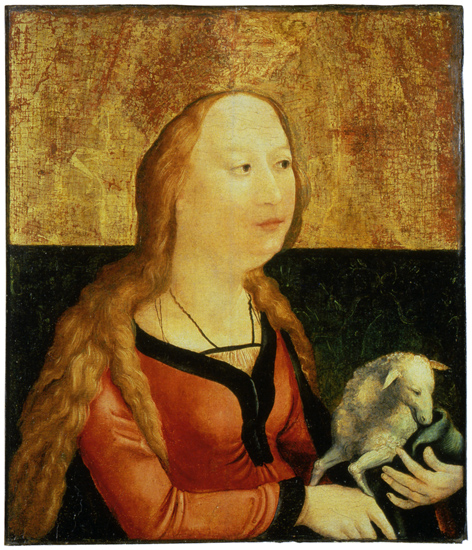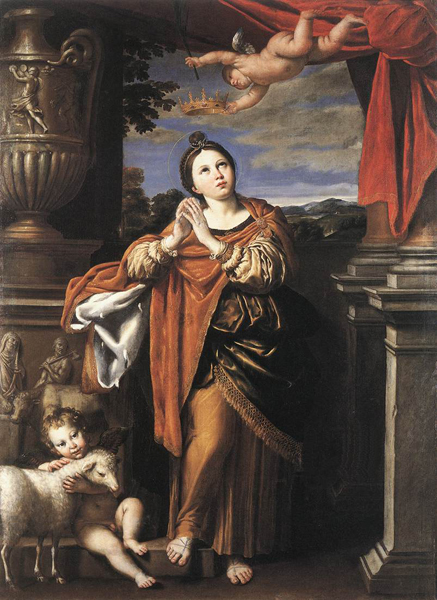At the age of thirteen, Agnes refused to marry the Governor of Rome in favor of a life of chastity, purity, and devotion to God. In retaliation, he ordered that she be dragged through the streets, naked, to a brothel. On the way, she prayed and her hair grew long, shielding her nakedness.
The men who tried to rape her were struck blind. After a trial and several failed attempts to burn her at the stake, she was finally beheaded around 304 CE. She is the patron saint of girls, rape victims, chastity and engaged couples — an interesting mix of distinct, yet overlapping concepts.
During the peak of his career, Domenichino was renowned as a landscape painter. Hints of this talent can be seen in the background of this painting, which depicts a blue sky with clouds and the tips of trees. However, here he rejects his favorite form of painting in favor of Bolognese classicism, probably as a result of the uncovering of Saint Agnes’ remains in Rome in 1605. Domenichino was living in Rome at the time of the discovery, and his decision to paint her is likely due to his interest in her story.
In this work, St. Agnes is shown gazing heavenwards while an angel holds a crown and martyr’s palm above her. On the left of the work, a classical vase and low relief symbolize the pagan life which Agnes left behind when she chose Christianity. The relief includes an image of sacrifice, perhaps alluding to Agnes’ own martyrdom. Because of the resemblance of her name with the Latin “agnus” meaning lamb, the putto (chubby male child) holds a lamb in the image.

Saint Agnes of Rome (Coburg Panel), Matthias Grünewald, c. 1500, Tempera on wood, Veste Coburg Castle, WikiCommons.
Matthias Grunewald was a German Renaissance painter who specialized in religious works. Grunewald rejected the Renaissance classicism favored in the 16th century to continue the expressive and intense style of late medieval Central European art, seen here in this image of Saint Agnes. Grunewald’s Agnes is only one panel in a much larger work that hangs in the Veste Coburg Castle in Germany.
The lamb motif is repeated in Grunewald’s interpretation of Agnes as it provides a strong visual clue towards the Saint he is depicting. There is evidence of a painted crown or halo that has been removed over time.

